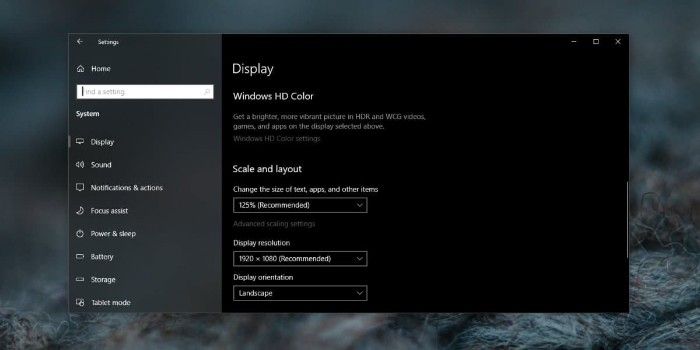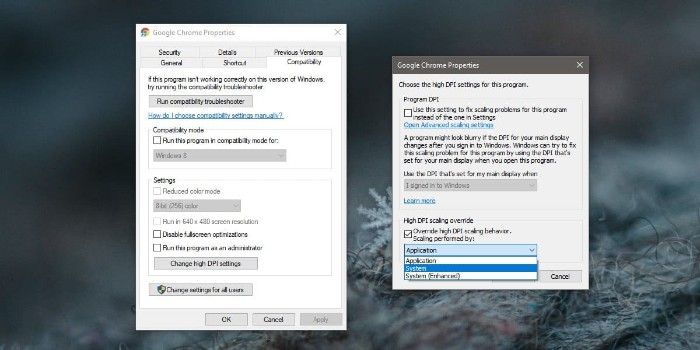The larger monitors are excellent for the screen they provide, but in order to use them, especially one that is an HD screen, you have to expand it or everything will be too small. Windows 10 has a built-in scaling feature that works, and mostly works well.
The scaling applies to everything that the operating system user interface and the applications you have installed. Although Windows 10 works great when it expands, applications are a different story. Not all applications work well with this function and often you get blurry text and overflowing elements that make it difficult to use the application. The following explains how to disable extension in applications but keep it enabled for Windows 10.
Disable application scaling
First things first, if you are not yet using scaling but intend to do so, turn it on and adjust it to the scale that best suits your screen. You can enable scaling from the Settings application. 1. Go to the System configuration group and select the Display tab.

Once this is done, check which applications have problems with scaling. To disable the scaling of a particular application, you must first examine how to access it, that is, the shortcut of the application you are using. Find it and click the right mouse button. In the context menu, select Properties.
Look for a tab called Compatibility. If this tab is absent, look for the application’s EXE in your installation folder. This must be in the Program Files or Program Files (x86) folder on your Windows drive. If the tab still does not appear, it is likely that the application does not support scaling.
On the Compatibility tab, click on the ‘Change high DPI settings’ button.

In the new window that opens, enable the behavior of ‘Override high DPI scaling’. Scaling done by the option: ’, and open the drop-down menu below it. Select the ‘System’ option and click OK.

It is a good idea to restart the application and its system after making changes to the scaling configuration. The above method must be repeated for all applications. That’s all you have to do. It seems that scaling cannot be disabled for UWP applications. This method only works for desktop applications, although you will find that they are the ones that generally do not work well with Windows 10 scaling.
If you have problems with an application UWP For example, blurry text or overflowing user interface elements can be a problem with the application itself. You can go to advanced scaling settings in the Settings application and allow Windows 10 to solve these problems. It may or may not make a difference.